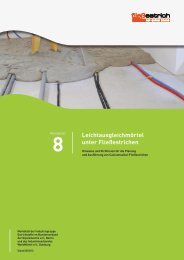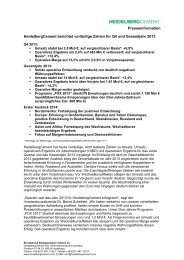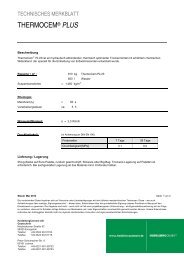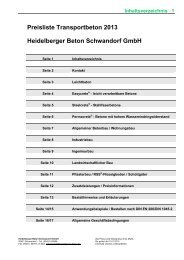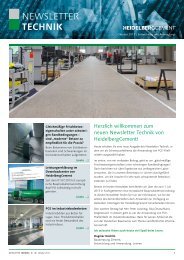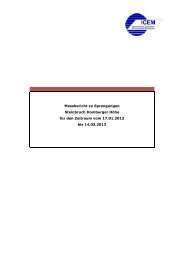TPCC Annual Report 2008.indd - HeidelbergCement
TPCC Annual Report 2008.indd - HeidelbergCement
TPCC Annual Report 2008.indd - HeidelbergCement
Create successful ePaper yourself
Turn your PDF publications into a flip-book with our unique Google optimized e-Paper software.
Tanzania Portland Cement Company Ltd, <strong>Annual</strong> <strong>Report</strong> 2008<br />
asset’s recoverable amount since the last impairment loss was recognised. If that is the case the carrying amount of the<br />
asset is increased to its recoverable amount. That increased amount cannot exceed the carrying amount that would have<br />
been determined, net of depreciation, had no impairment loss been recognised for the asset in prior years. Such reversal<br />
is recognised in the income statement. After such a reversal the depreciation charge is adjusted in future periods to al-<br />
locate the asset’s revised carrying amount, less any residual value, on a systematic basis over its remaining useful life.<br />
Investments and other financial assets<br />
Financial assets within the scope of IAS 39 are classified as financial assets at fair value through profit or loss, loans and<br />
receivables, held-to-maturity investments, or available-for-sale financial assets, as appropriate. When financial assets are<br />
recognised initially, they are measured at fair value, plus, in the case of investments not at fair value through profit or<br />
loss, directly attributable transaction costs.<br />
The Company determines the classification of its financial assets on initial recognition and, where allowed and appropri-<br />
ate, re-evaluates this designation at each financial year end.<br />
All regular way purchases and sales of financial assets are recognised on the trade date, which is the date that the Com-<br />
pany commits to purchase the asset. Regular way purchases or sales are purchases or sales of financial assets that require<br />
delivery of assets within the period generally established by regulation or convention in the marketplace.<br />
Financial assets at fair value through profit or loss: Financial assets at fair value through profit or loss includes financial<br />
assets held for trading and financial assets designated upon initial recognition as at fair value through profit or loss.<br />
Financial assets are classified as held for trading if they are acquired for the purpose of selling in the near term.<br />
Held-to-maturity investments: Non-derivative financial assets with fixed or determinable payments and fixed maturities<br />
are classified as held-to-maturity when the Company has the positive intention and ability to hold to maturity. After<br />
initial measurement held-to-maturity investments are measured at amortised cost using the effective interest method.<br />
Gains and losses are recognised in profit or loss when the investments are derecognised or impaired, as well as through<br />
the amortisation process.<br />
Loans and receivables: Loans and receivables are non-derivative financial assets with fixed or determinable payments<br />
that are not quoted in an active market.<br />
After initial measurement loans and receivables are carried at amortised cost using the effective interest method less any<br />
allowance for impairment. Gains and losses are recognised in profit or loss when the loans and receivables are derecog-<br />
nised or impaired, as well as through the amortisation process.<br />
Available-for-sale financial investments: Available-for-sale financial assets are those non-derivative financial assets that<br />
are designated as available-for-sale or are not classified in any of the three preceding categories. After initial measure-<br />
ment, available-for-sale financial assets are measured at fair value with unrealised gains or losses recognised directly<br />
in equity until the investment is derecognised or determined to be impaired at which time the cumulative gain or loss<br />
previously recorded in equity is recognised in profit or loss.<br />
Fair value: The fair value of investments that are actively traded in organised financial markets is determined by refer-<br />
ence to quoted market bid prices at the close of business on the balance sheet date. For investments where there is no<br />
37





